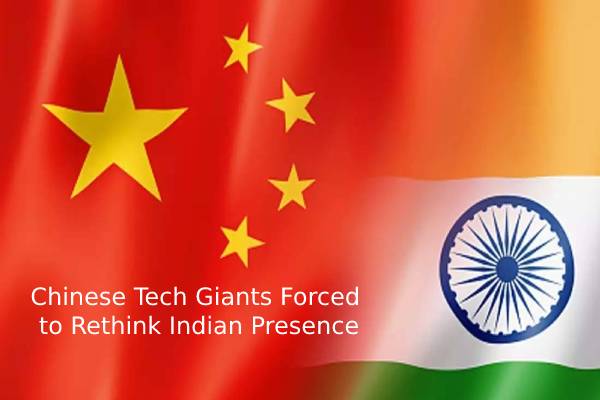Chinese tech companies are among the biggest investors in India’s IT ecosystem. Years of
mutual digital growth (albeit dominated by China) is about to be cancelled by the latest
geopolitical confrontation of the two neighbours.
(Indian) Politics over (Chinese) Economy
For years, Chinese tech companies and online giants have had a noticeable presence in
India. Alibaba and Tencent own shares, support or promote many of the online services,
financial technology and entertainment segments in the subcontinent. Payment providers
(e.g. Paytm, PhonePe), electronics hardware (Xiaomi, BBK, Huawei) and others employ a
considerable amount of local talent in India.
Tension between the two big neighbours has been high ever since June, when they last
engaged in the LAC, with at least 20 Indian soldiers dead. With Covid-19 speeding up online
transition for many business sectors, this has served as sufficient reason for India to stake its claim for control of its digital sovereignty.
Both will bear the negatives of the confrontation, inevitably. Chinese digital giants, however,
have more to lose. With India’s online population currently reported at 750 million users,
the second largest global market is a huge loss to them, having invested heavily over the
past few years.
In a few months, Indian officials have banned more than 200 Chinese apps and services,
including the immensely popular Tik Tok and WeChat, gaming favourite PUBG and, more
recently, AliExpress and AliPay, among others. This has withheld income and data flow for
China and has soured the business climate in the Asian online sector indefinitely.
Who Is Missing Out More
Chinese digital behemoths will miss out on an enormous and still growing base of users, the
lifeblood of digital innovation. India will feel the blow in terms of readily available fresh
new tech and business models. Besides fintech, China had invested much into daily-life
apps and proven desi online entertainment choices. Favourite gaming platforms were
developed in synergy, as desi users regularly put their trust in an online casino app or a
Martingale roulette strategy.
In the long run, it seems that China will suffer more from the breakup, as the Indian
internet market represents immense user groups – demographically and linguistically
diverse – and an invaluable testing and capitalisation platform for any sustainable online
business. Having invested much of their plans for future growth in India, they need to
rethink such a strategy. And do it fast.
Indian IT Making New Friends
It is also inevitably true that Indian digital start-ups will be at risk, especially in the short
run. Chinese tech had invested more than USD 4 billion in the sector over the past few
years, with Xiaomi committing almost USD 500 million in a single year. Tencent is also
notoriously the largest “strategic investor” in the local start-up ecosystem.
Now that India is willing to inspect more carefully the inflow of new assets on its territory,
many important players are starting to rethink their presence. Paytm’s parent company Ant
Group, a leading fintech player, is considering selling its 30% stake in the payment provider.
Cited tensions and a tougher competition because of unilateral restrictions are expected to
push others to reconsider their long-term strategy.
The Central Government has promoted the Digital India initiative strongly, hoping that the
void left by Chinese and other global players might stimulate home-grown digital
companies. In the short term, however, it might just need the foreign investment support
which has practically started pouring in immediately after the summer events.
Where US giants Google Pay and PhonePe (Walmart) are currently undisputed leaders,
India has seen the entry of Facebook’s WhatsApp Pay, Amazon’s payment service and other
local startups. Mukesh Ambani’s Jio Platforms have struck a series of agreements securing
more than USD 20 billion from global investors in the past few months alone. Their aim is
to support local tech growth, developing a self-sufficient desi IT sector and a mature digital
consumer base at the same time.




